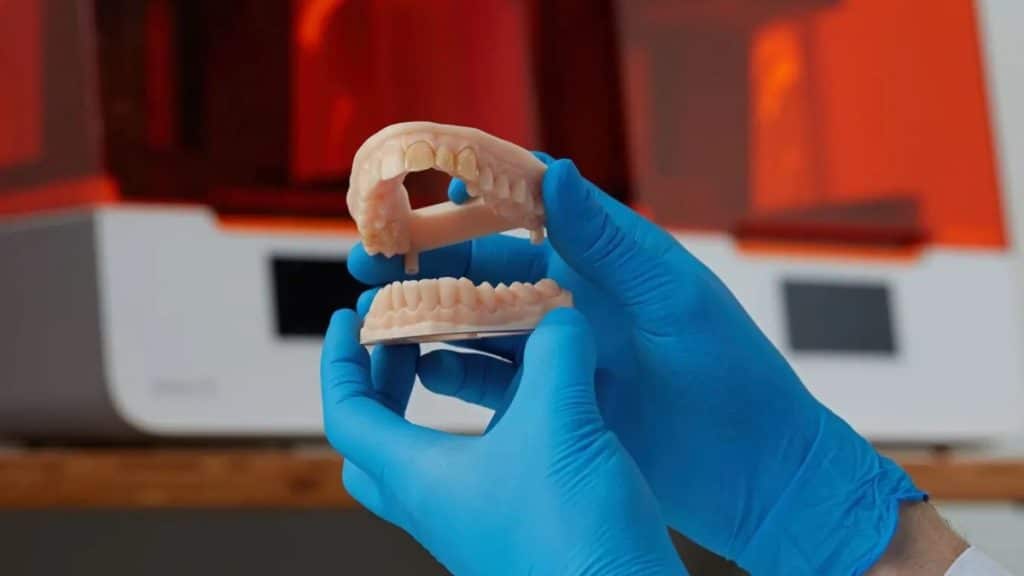SLA (Stereolithography) 3D printing is transforming the dental industry by offering precision, efficiency, and affordability. This advanced technology allows dental professionals to create highly accurate models, prosthetics, and surgical guides, improving patient care while reducing costs and turnaround times. As digital dentistry continues to evolve, SLA 3D printing plays a crucial role in optimizing treatments and enhancing patient experiences. Here is how SLA 3D printing contributes to better dental health.
Enhancing Accuracy in Dental Models and Prosthetics
Traditional methods of crafting dental models and prosthetics involve manual labor and impression-taking, which can lead to slight inaccuracies. Even small errors can result in ill-fitting dental restorations or misaligned orthodontic devices. However, SLA 3D printing works with resin-based materials that allow for micron-level accuracy. With digital intraoral scans and computer-aided design (CAD) software, dentists and dental technicians can create extremely precise models for crowns, bridges, dentures, and implants. The digital workflow eliminates human error and ensures that the final product fits perfectly. This increased accuracy leads to better treatment outcomes and long-term patient satisfaction.
Speeding Up Production of Dental Devices
Time is critical in dental treatments, and traditional fabrication methods can take several days or even weeks to produce essential dental devices like aligners, crowns, and surgical guides. Patients often have to return for multiple appointments, leading to prolonged treatment durations and potential discomfort.
SLA 3D printing accelerates the production process significantly. Once a digital scan is taken, the model can be printed within hours rather than days. Many dental clinics now have in-house 3D printers, enabling same-day or next-day delivery of crowns, dentures, and other dental prosthetics. This rapid turnaround enhances the overall patient experience and minimizes disruptions to their daily lives.
Reducing Costs for Dentists and Patients
Affordability is another major advantage of SLA 3D printing in dentistry. Traditional methods of manufacturing dental devices involve labor-intensive processes and expensive materials, leading to higher costs for both dentists and patients. Additionally, outsourcing the production of dental prosthetics to third-party labs adds to the overall expenses and delays.
With SLA 3D printing, dental clinics and laboratories can produce prosthetics, aligners, and surgical guides in-house, eliminating the need for expensive outsourcing. The cost of printing materials is significantly lower than traditional fabrication materials, and the automated process reduces labor costs. As a result, patients receive high-quality restorations and orthodontic devices at a more affordable price.
Furthermore, SLA 3D printing reduces material waste. Traditional casting and milling techniques often involve cutting away excess material, leading to wastage. In contrast, SLA printing uses only the required amount of resin, making it a more sustainable and cost-effective option in the long run.
Improving Patient Comfort and Experience
The patient experience in dentistry is often associated with discomfort, especially when traditional impression-taking methods are involved. The conventional approach requires patients to bite down on putty-like materials to create molds, which many find unpleasant and uncomfortable.
With SLA 3D printing, this process is eliminated. Instead, dentists use digital intraoral scanners to capture detailed images of the patient’s mouth. These digital impressions are then used to create accurate dental models, eliminating the need for messy and uncomfortable traditional impressions.
Moreover, SLA 3D printing ensures a better fit for dental restorations, reducing the chances of adjustments and remakes. Poorly fitted crowns or dentures can cause discomfort and require multiple visits for correction. With precise digital models, patients receive well-fitting restorations the first time, leading to greater satisfaction and improved oral health.
Take Away
SLA 3D printing is revolutionizing the dental industry by enhancing accuracy, increasing production speed, lowering costs, and improving patient comfort. With its ability to create highly detailed and precise dental models, this technology is helping dentists provide better care with improved efficiency. By reducing the reliance on traditional manual methods, SLA 3D printing offers a future where dental treatments are faster, more affordable, and more comfortable for patients. As technology continues to advance, its role in digital dentistry will only expand, further improving dental health and patient experiences worldwide.
